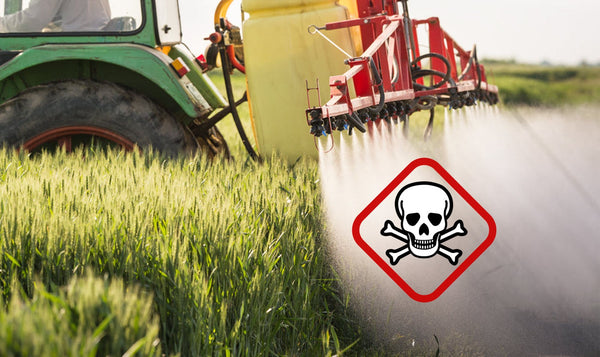Is Your Soap Made With Lye (Sodium Hydroxide)?

Is your soap made with lye? And what is lye anyway?
Answer: Yes, your soap is made with lye because ALL soap is made with lye. Every single bar of soap on earth was made with lye. Every one. But soap does NOT contain lye. Say what? Allow me to explain.
Lye is another term for sodium hydroxide. All soap is made with lye because it is LITERALLY IMPOSSIBLE to make soap without lye. If someone tells you that they have soap that's not made with lye, either:
A. They are lying. (Sadly, many skincare companies lie about their ingredients.)

B. They don't understand how soap is made.
 👈That was me. Until I started making soap, I had no idea lye was required.
👈That was me. Until I started making soap, I had no idea lye was required.
C. They don't have soap, they have detergent. Detergents are synthetic cleansers made from dozens of synthetic chemicals, many of questionable safety. And most of those chemicals are derived from the petroleum industry. Soap, on the other hand, is a natural cleanser made by combining plant oils or animal fat with water + lye. Check out this blog post and this one for more about the difference between soap and detergent.

Ok, so all soap is made with lye. But what exactly is lye and how is it possible that soap is MADE with lye, but soap does NOT CONTAIN lye?

Lye (sodium hydroxide) is made by adding ordinary table salt (sodium chloride) to water, then passing an electrical current through the water. The electricity causes a chemical reaction that turns the table salt into lye.
Some soap makers list the saponified form of the oil. So instead of listing "olive oil" and "sodium hydroxide" as ingredients they will list "saponified olive oil" or "sodium olivate" as ingredients. Those are just three different ways of saying the exact same thing: Olive oil was combined with sodium hydroxide and water to produce soap.
[Sodium Hydroxide + Olive Oil] = Saponified Olive Oil = Sodium Olivate
Got it?
We list "sodium hydroxide" on our labels but some companies list "saponified oils". Example below (not our soap). "Saponified Oils" = oils combined with lye. (Note: There's no such thing as "sustainable" palm oil, but that's a story for another blog.)

So, to recap, ALL soap is made with lye (also called sodium hydroxide) because it is literally impossible to make soap without lye. But soap does NOT contain lye because—due to the magic of chemistry—when sodium hydroxide is combined with oils, a chemical reaction called saponification occurs and the ingredients are turned into a brand new substance: Soap!
Thanks for reading!
— Kal Garcia, founder of S.M.O.C. Skincare
Want to learn more? Just google "saponification" or "how soap is made". And check out our other blog posts, like this one about the difference between soap and detergent.


